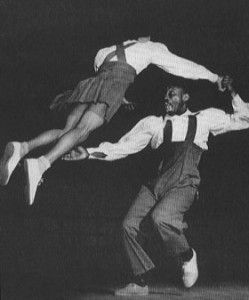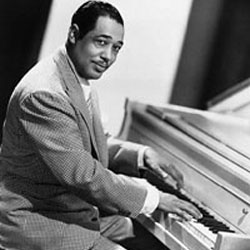There was a time when you could visit ballrooms and nightclubs across America merely by spinning the radio dial. Through the magic of live remote late-night radio broadcasts, listeners could be transported from their living rooms to the glamour of the Panther Room at the Hotel Sherman in Chicago's Loop and the Savoy Ballroom in Harlem, the "Home of Happy Feet," where bandleaders Chick Webb and Count Basie played for acrobatic Lindy Hoppers on the dance floor.
In 1920 there was only one radio station broadcasting in the entire United States. Seven years later there were over 700 stations on the air and by 1934 radio had grown into a huge and powerful industry. In spite of the Great Depression over 14 million American households owned at least one radio.
In daytime and early evening hours the Columbia and NBC networks produced news, sports and entertainment programs. The understated comedian Jack Benny and the affable crooner Bing Crosby were top radio stars who captivated millions of listeners. Few radio shows were as well-loved as the long-running situation comedy Fibber McGee and Molly and popular dramatic serials included The Lone Ranger, The Shadow and Stella Dallas.
But in the 1930s the most popular radio programming of all was dance music. Late at night between 10:00 PM and 1:00 AM radio networks and local stations filled the airwaves with live radio broadcasts featuring many of the best jazz musicians of the day. Though some radio stations offered weekly broadcasts of hometown dance bands playing romantic music from local ballrooms, most late-night live radio broadcasts were coast-to-coast “hookups" featuring name bands playing hot jazz for dancing.
Duke Ellington’s debut in 1927 at The Cotton Club, a speakeasy on the second floor of 644 Lexington at the corner of West 142nd Street in Harlem, is an early demonstration of the power of the media in promoting music. Weekly live broadcasts over WHN featuring Ellington’s Orchestra gave the fledgling band unprecedented national exposure and made Duke Ellington a star.
This week Riverwalk Jazz evokes the sounds of late night radio in the 1930s and 40s as clarinetist Allan Vaché, vibes player John Cocuzzi, vocalist Rebecca Kilgore and trombonists Dan Barrett and Bob Havens join The Jim Cullum Jazz Band.
Photo credit for home page teaser image: Lindy Hopper Frankie Manning. Photo courtesy jitterbuzz.
Text based on Riverwalk Jazz script by Margaret Moos Pick ©2005



